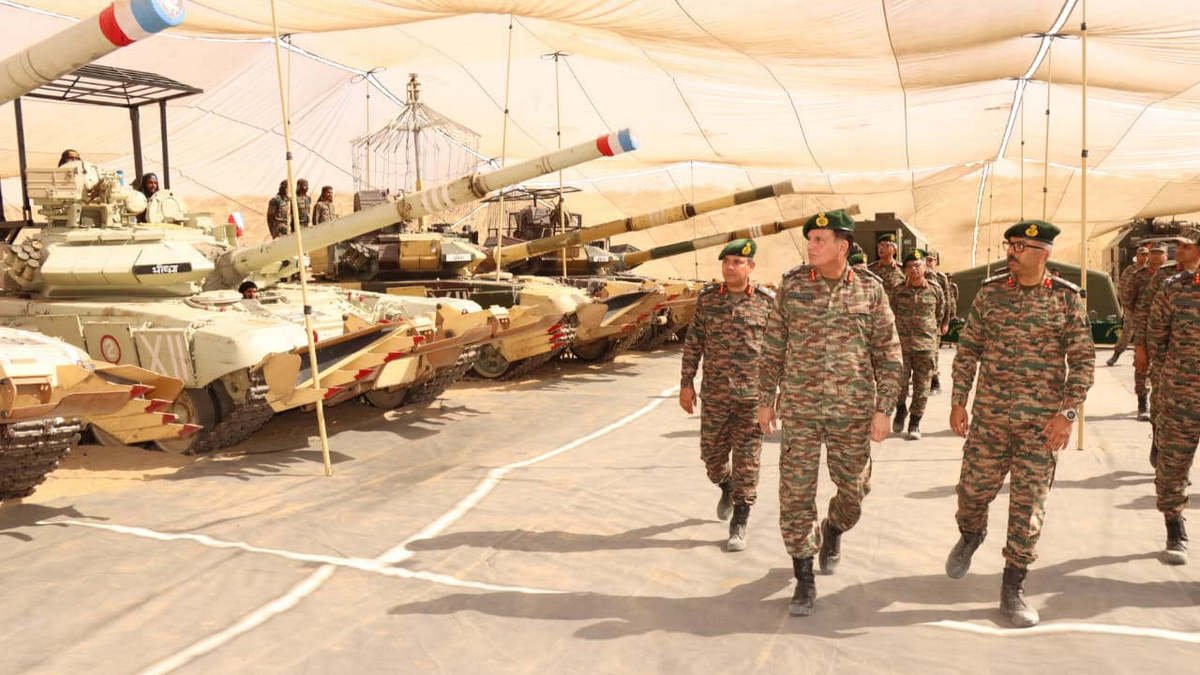Is India moving from the ‘Cold Start’ to ‘Cold Strike’ doctrine?
The Indian Army has long hewed to its ‘Cold Start’ strategy, which was formed in the aftermath of the 2001 Parliament attack. However, with the formation of the ‘Rudra brigades’ – which was announced by Indian Army chief General Upendra Dwivedi earlier this year – India may now be shifting to the ‘Cold Strike’ programme.
But why is the Indian Army considering moving from ‘Cold Start’ to ‘Cold Strike’? What do we know?
Let’s take a closer look.
A brief look at Cold Start
First, let’s take a brief look at ‘Cold Start’.
The Cold Start doctrine was formulated by the Indian Army as a “pro-active conventional war strategy” in the aftermath of the 2001 Parliament attack. India, at the time, had launched Operation Parakram as a response to the terror attack.
However, it took India’s “strike formation” troops nearly a month to mobilise at the border launch pads. By that time, Pakistan had prepared itself for such an attack. Moreover, the United States, as it so often had done in the past, jumped in to pressure India against launching any cross-border attack.
The Cold Start doctrine was created to solve these problems . The idea was to be able to hit Pakistan immediately and without much pre-emption in the aftermath of such an incident, hence the term Cold Start.
India, in order to achieve this, sought to rework its military into smaller groups – which allowed it speed and mobility. The idea was to move quickly across the border in days rather than weeks, capture small parcels of land, and destroy military assets before international pressure could be brought to bear on India.
However, even more importantly, such an approach would keep the conflict limited in scope. Which means it would not cross any red lines – that is, rising to the level of a nuclear attack. India, remember, has a ‘no first-strike’ policy when it comes to its nuclear weapons, meaning it will only use nuclear weapons to retaliate against such a strike.
The existence of the doctrine was first confirmed publicly in 2017 by then Indian Army Chief Bipin Rawat. It gained greater significance in the public eye in the aftermath of the terror attacks at Uri and Pulwama.
The Week quoted Lt Gen AB Shivane as saying that Cold Strike is “India’s pre-emptive, multi-domain deterrence philosophy, shaped by real-time intelligence, information dominance, and strategic orchestration. It thrives not on brute invasion but on cognitive disruption, precise degradation, and narrative control. It is war as deterrence, not destruction; assertion, not adventurism."
However, some argue that new threats including multi-domain warfare such as attacks on land, by air, in cyberspace as well as increases in precision strike capabilities have rendered the ‘Cold Start’ doctrine outdated.
Rudra Brigades and the shift to Cold Strike
According to reports, the Indian Army is converting some of its over 250 single-arm brigades – each with over 3,000 troops – into Rudra ‘all-arms’ brigades.
The formation of these ‘all-arms’ Rudra brigades was announced on Kargil Vijay Diwas earlier this year. These brigades comprise a mix of infantry, mechanised infantry, armoured units, artillery, special forces, and unmanned aerial systems. They are backed by customised logistics and combat support.
The idea behind these brigades is to establish a self-contained group that melds all fighting arms and support units. This allows for far better organisation and quicker deployment in operations. The Army earlier operated brigades based on individual arms.
Two such brigades have already been established at the northern borders with China – in eastern Ladakh and Sikkim.
“Each Rudra brigade will be tailor-made as per its earmarked area of operation, the type of terrain there and the operational task to be executed. The brigades will have units that can be attached or detached as per the requirements,” an officer told The Times of India.
What do experts say?
According to experts, the Indian Army may now begin upgrading its ‘Cold Start’ doctrine to ‘Cold Strike’ for swifter and greater offensive thrusts into enemy territory. The Rudra ‘all-arms’ brigade recently underwent operational validation during the ‘Akhand Prahar’ military exercise in the Thar desert.
Lt Gen Dhruv Seth had expressed satisfaction with the performance of the brigade, saying the exercise demonstrated the capabilities of the unit. “There used to be a doctrine called the Cold Start Doctrine, in which the Army would mobilise and then be ready in the operational area. But now the time has come to transform the Cold Start Doctrine into the Cold Strike Doctrine with the Rudra Brigade,” he said.
“The Rudra Brigade will always be ready to carry out the given task with full capability and to have an effective impact on the enemy. I am satisfied with their performance. I am confident that with the land manoeuvres they have shown, they will be capable of handling all tasks successfully," he said.
However, some caution that more ‘all-arms’ brigades need to be formed and their operational capabilities tested across several terrains including at high altitudes, in the jungles, and in urban operations. They also say that these brigades must have enough support, any lingering supply chain issues must be tested and fixed, and infrastructure maintained.
The Indian Army, Indian Air Force, and Indian Navy will also need to collaborate more closely. Command doctrine must be refined and communication networks between the three improved. The rules of engagement and command-and-control mechanisms must be spelled out clearly.
With inputs from agencies
)